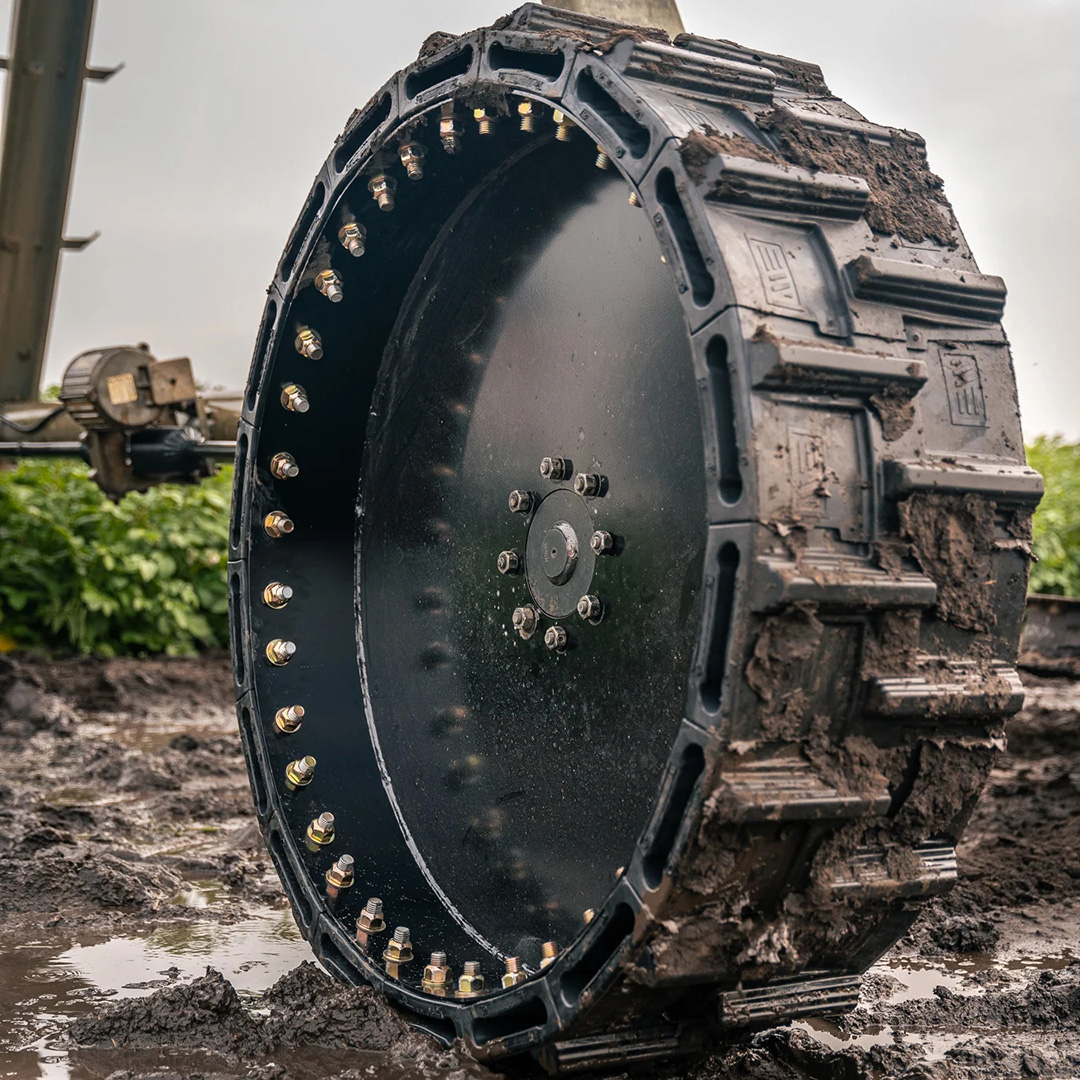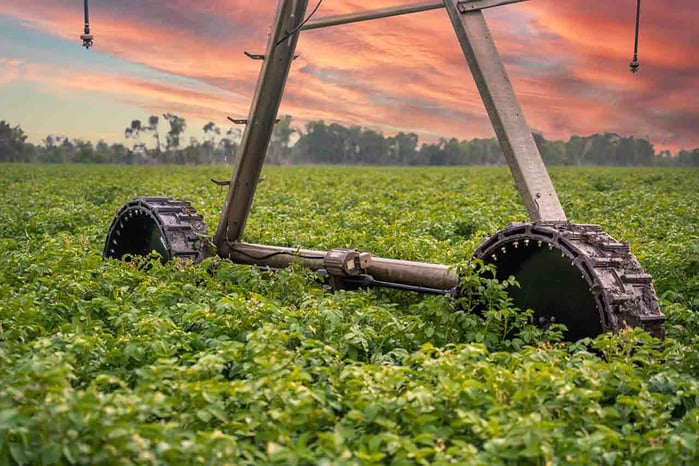The style of tires you use on your center pivot irrigation system can make all the difference. Evolution Wheel understands flat tires and downtime in the field are unacceptable. So, we built the EWRS-PIVOT Series airless pivot tire. A tire that eliminates flats and downtime due to flat tires.
There are 5 main reasons to use an airless pivot tire for your irrigation system.
1. Flat Proof
Irrigation tires operate in severe conditions. Wet and muddy conditions with high UV light cause pneumatic pivot tires to go flat before tread wear.
Flat pivot tires in the field cause all sorts of problems. The tire can fill with mud and water, becoming incredibly heavy, bogging down the irrigation system, and damaging the drive train. Flats are easily avoidable with airless options.

2. Better Traction
Traction is exceptionally critical in the wet and muddy conditions of irrigation systems. The great thing about our tires is that they compress when needed, increasing traction and floatation.
3. Better Floatation
It’s simple, the less floatation, the deeper your ruts will be. Floatation in a tire prevents deep ruts. Tires with bi-directional tread, wide tread, and a flat or concave profile are what you should look for when fighting ruts in the field.
Bi-Directional Tread
Bi-directional tread patterns don’t just help with traction. They don’t dig into the ground as a directional tread does. The directional tread pushes dirt from underneath the tire out to the side, contributing to ruts in the field. A bi-directional tread limits the digging effect of a directional tread without losing traction.
Convex vs. Concave Tread Profile
Pneumatic pivot tires have a convex tread profile. This design will push away from underneath the tire, deepening the ruts in your fields. Airless pivot tires are designed with convex, flat, and concave profiles. A flat profile will not push dirt away but will sink into the mud due to the system's weight. A concave profile is the most effective option, as it holds mud underneath the tire. When you have deep ruts in your field, it is your best defense.
4. Serviceability
Non-Serviceable Pivot Tires
The more serviceable a tire is, the longer it will last. This is an aspect many operators don’t consider when purchasing tires. A bonded-on airless tire isn’t serviceable as the rubber is chemically bonded to the rim. When these tires are damaged, the rubber and the rim must be replaced.
Semi-Serviceable Pivot Tires
A pneumatic irrigation tire needs special tools and technicians to be serviced when damaged. Luckily, they can sometimes be saved; however, the rubber must often be replaced. They usually cannot tell if the tread is completely worn before they are damaged.
Completely Serviceable Pivot Tires
A segmented airless tire is the most serviceable option. These tires are composed of segments that allow the operator to remove and replace a damaged segment easily. These options almost always last until the tread is worn, as you can switch out a segment when needed.
5. Cost-Effective
Though airless pivot tires are the most expensive up front, they last much longer than pneumatic tires. If you go with a serviceable option like the EWRS-PIVOT Series you don’t need to worry about downtime due to flat tires, constantly replacing tires and premature damage.


